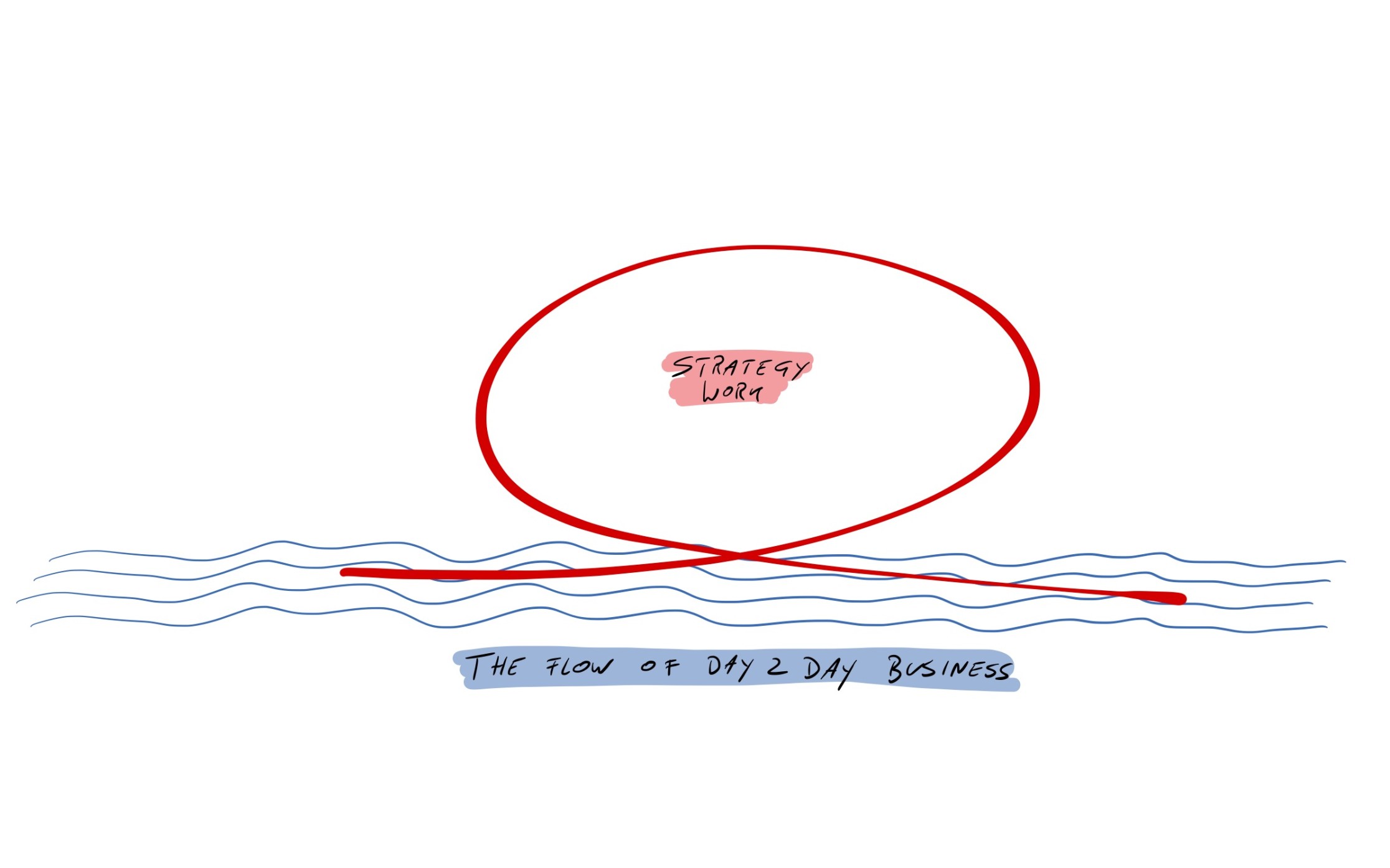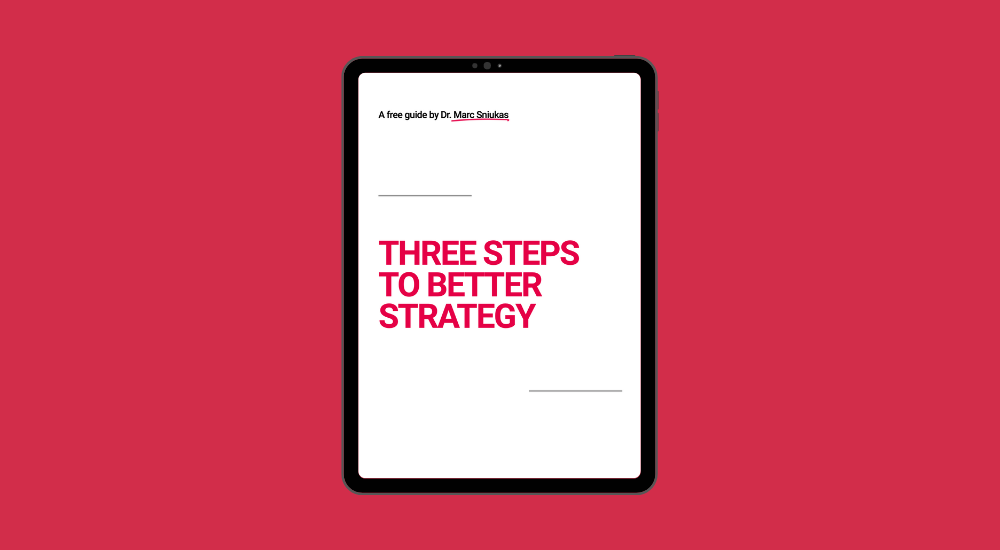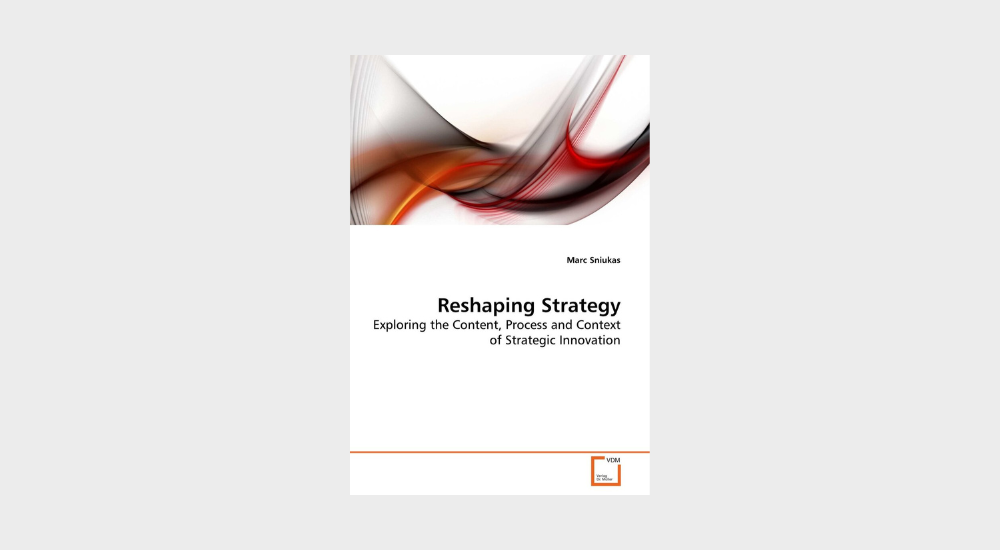Confront the Brutal Facts — Is your Strategy Really Working?
When you start thinking about your strategy, you first need to honestly evaluate what is going on, both inside your organization and in the market....
Strategy is now more critical than ever. In turbulent times the seduction to keep on doing what you're doing, regardless of whether it still fits your environment, is incredibly enticing. But pushing harder, doing more of the same, might be the very reason why your strategy is not working, and you do not see the results you're used to.
Crafting a successful strategy is about inventing your future based on a thorough inventory of the current situation and the opportunities the future holds.
Your strategy shouldn't be guided solely by past successes. Without a conscious review and decision, organizations tend to continue past experiences and keep on doing what they are doing.
Hence, I argue that taking time for strategy work and committing to a regular strategy process, going beyond the usual yearly offsite, is now more critical than ever. And if you decide to invest time, you should make sure it's time well spend and think about how to set up a good strategy process. A strategy process that creates both business impact and creative energy for strategy work.
A good strategy process creates business impact + creative energy among the team.
First, your strategy process needs to allow the executive team to emerge from the urgency of day-to-day business and take a deliberate break from daily operations. Most executives don't have time to think about strategy during their busy days and ask themselves whether the company is on its best track and whether the company is doing the things it should be doing, considering the bigger picture. Fixed meetings, happening at regular intervals - once a week or once a month, for example - provide such an opportunity. The time and agenda of these meetings need to be well protected to avoid urgent operations to take over. External facilitation can help to keep the team accountable and on track.
Without institutionalizing strategy into the management process, it will always lose against the urgency of day-to-day business.

The strategy loop illustrates the emergence from the busyness and urgency of day-to-day operations to focus on strategic matters from an elevated, somewhat outside, perspective. (Adapted from Nagel & Wimmer)
Whereas the regular meetings create time for strategy, the meetings themselves need to be designed to enable real strategic thinking and honest strategy conversations. Such a space has to build trust among the members, it has to open their thinking and activate their intellectual intelligence, it has to open their feeling and emotional intelligence, and it has to open their will to act (see Otto Scharmer's reference to the open mind, open heart, and open will). Only then are truly innovative answers to strategic questions possible.
Consider this example, which might sound familiar: A management team can't agree on an innovation strategy, and although most say, innovation is necessary, there's no real commitment. An honest conversation about what will happen in the future, and how the company will lose competitive advantages, with first examples of where that's already happening, opens up the thinking and aligns on the necessity for innovation. Yet, although logically understood, there's still no commitment. Probing deeper brings to light the personal struggles of some members being overwhelmed with the need to innovate, not knowing how to do it, being afraid of the cost, and the risk of failure - opening up the emotions. Opening up and being honest about these emotions allowed the team to discuss and agree on a sustainable way forward, which all team members support - open will to act.
Your strategy process has to allow for and enable creative energy, alignment and commitment.
Strategy work can be complex. And that complexity can be overwhelming. And if we're overwhelmed, we can't think well. To mitigate that complexity your strategy process needs to incorporate components allowing for
Such a content structure provides a logical framework and makes the strategy work more understandable. It also provides clarity to the strategy team members and enables them to focus on particular aspects, well knowing that other elements will be discussed at other meetings. Although the components are presented in a logical sequence here, and I would suggest starting in that sequence the first time you run through it, it will be a lot less sequential once you got started. The loop presented above also illustrates that you will keep going through these components on an ongoing basis.
The results of such a deliberate strategy process are twofold: First, strategy becomes an explicit and collaborative leadership effort, and second, the strategic capabilities of the executive team and the organization are strengthened.

When you start thinking about your strategy, you first need to honestly evaluate what is going on, both inside your organization and in the market....

A practical guide on how to design and execute better strategies. In this free guide you will learn how to reboot your strategy with the Strategy...

Reshaping Strategy A review and synthesis of the academic and managerial literature on strategic innovation. Strategy as practiced by companies today...